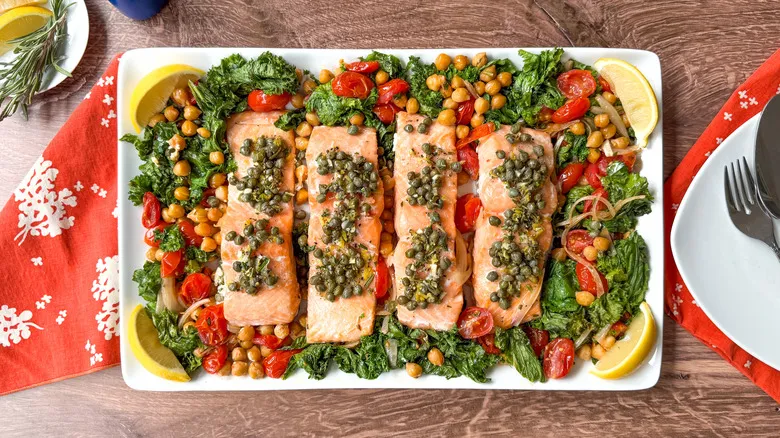Gather the 1-pan baked salmon with mustard greens and chickpeas ingredients
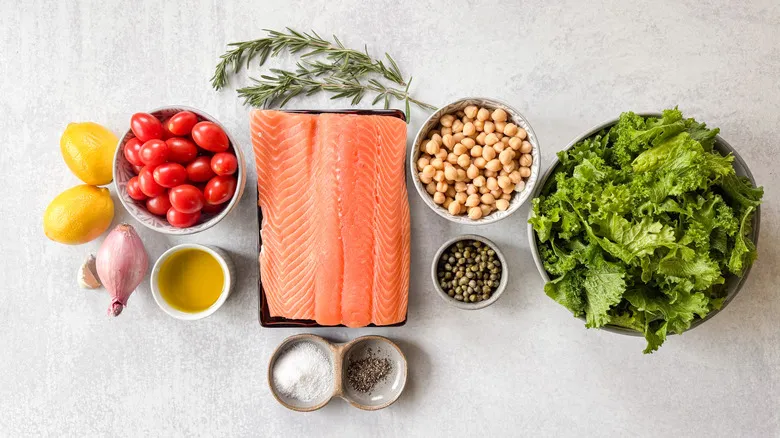
The highlight of this recipe is a fresh, thick center-cut salmon fillet with the skin left on. Keeping the skin intact during cooking helps maintain the salmon's structure and allows extra flavor and fat to infuse into the flesh. The salmon is baked on a sheet pan alongside a blend of canned chickpeas, grape tomatoes, shallots, extra-virgin olive oil, and fresh rosemary. To finish, the salmon is topped with a mixture of drained capers, lemon zest and juice, minced fresh garlic, and a sprinkle of salt and pepper. Finally, fresh mustard greens are arranged around the salmon, adding a peppery, slightly bitter, and vibrant flavor that beautifully contrasts with the rich salmon.
Step 1: Preheat the oven
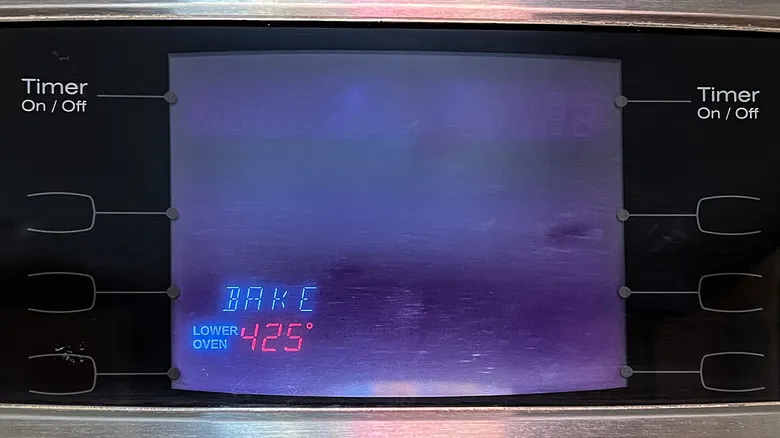
Set the oven temperature to 425°F.
Step 2: Prepare a baking sheet
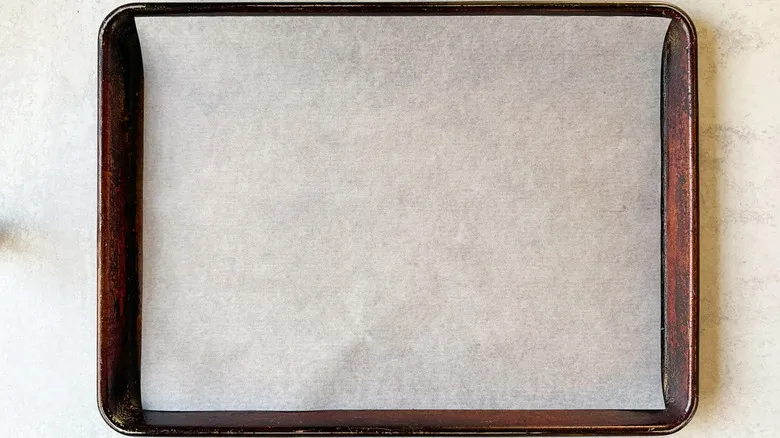
Cover a rimmed baking sheet with parchment paper.
Step 3: Combine the chickpeas, shallot, tomatoes, and seasonings

In a medium-sized bowl, mix together the chickpeas, shallot, tomatoes, 2 tablespoons of olive oil, 2 teaspoons of rosemary, and 1 teaspoon of sea salt.
Step 4: Transfer the chickpea mixture to the baking sheet
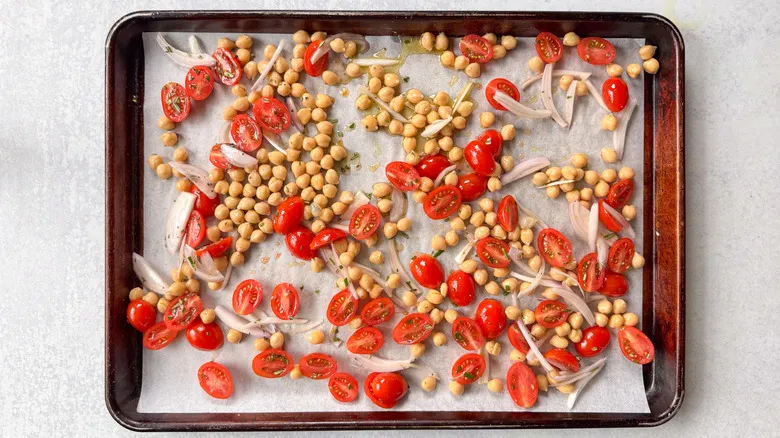
Move the chickpea mixture onto the baking sheet.
Step 5: Bake the chickpeas
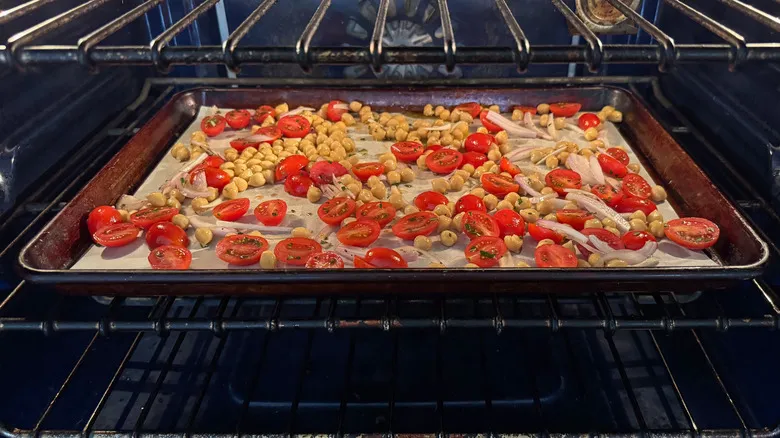
Cook in the oven for 10 minutes.
Step 6: Rinse and dry the salmon
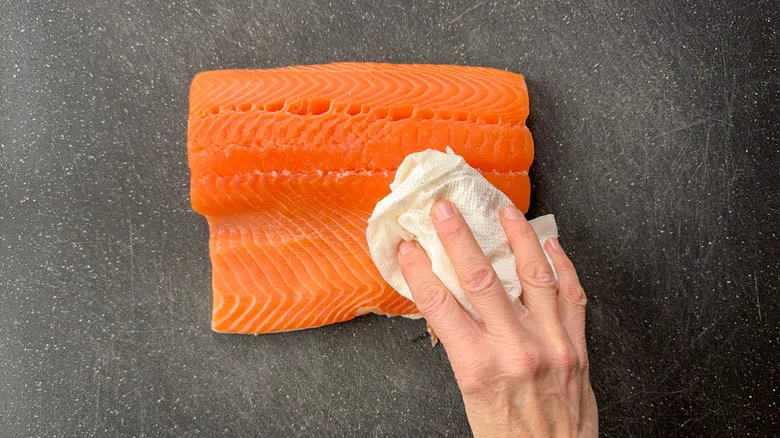
As the chickpeas bake, rinse the salmon fillet and gently pat it dry.
Step 7: Cut the salmon into portions
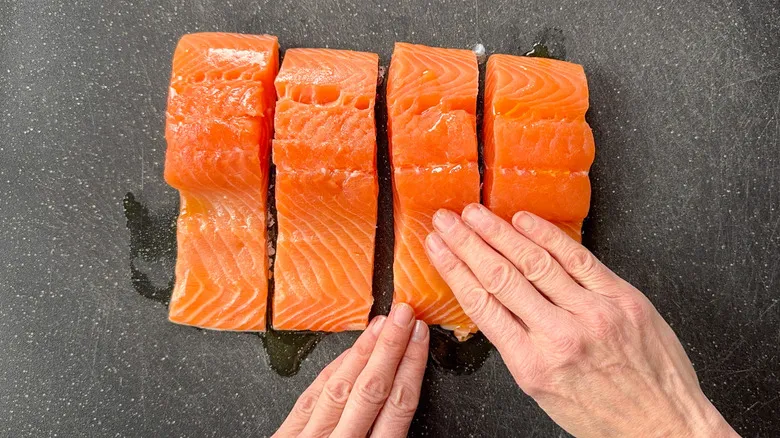
Divide the salmon into four equal pieces and coat with 1 tablespoon of olive oil.
Step 8: Reduce the oven temperature
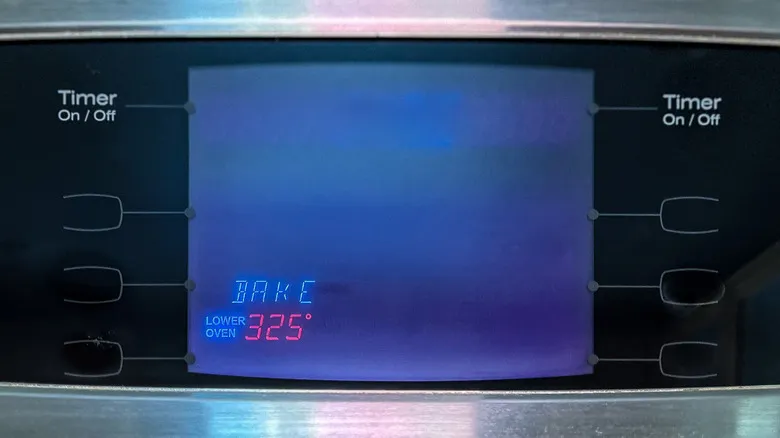
Take the chickpeas out of the oven and lower the temperature to 325°F.
Step 9: Mix the topping for the salmon
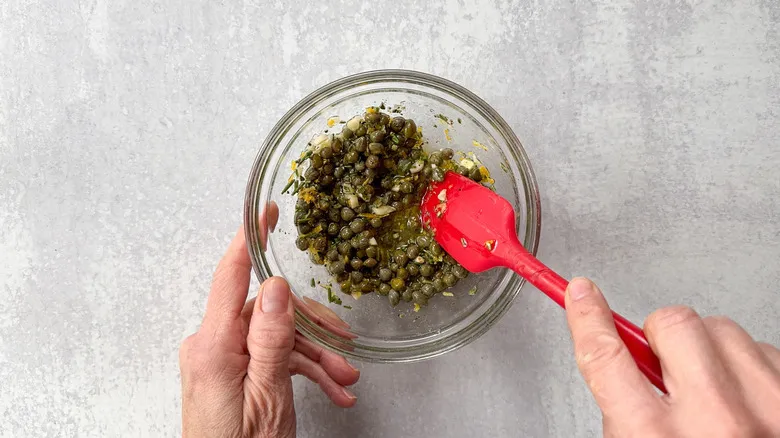
In a small bowl, mix together the capers, 2 tablespoons of olive oil, lemon zest, lemon juice, the remaining 2 teaspoons of rosemary, garlic, the last teaspoon of sea salt, and the pepper.
Step 10: Add the salmon to the baking sheet
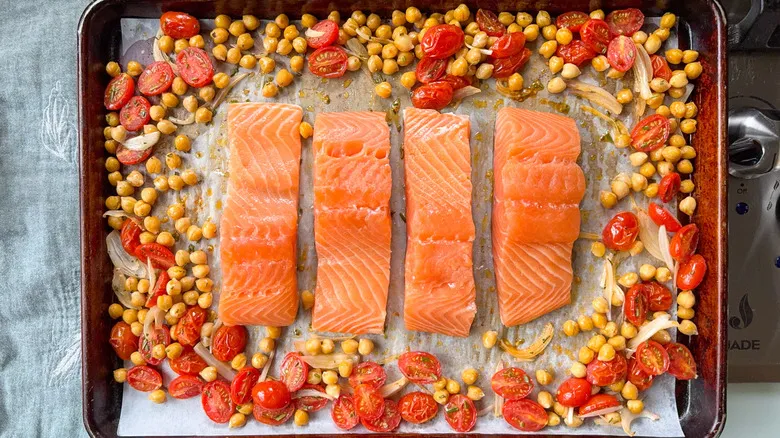
Move the chickpea mixture to the edges of the baking sheet and position the salmon skin-side down in the middle of the pan.
Step 11: Add the caper topping
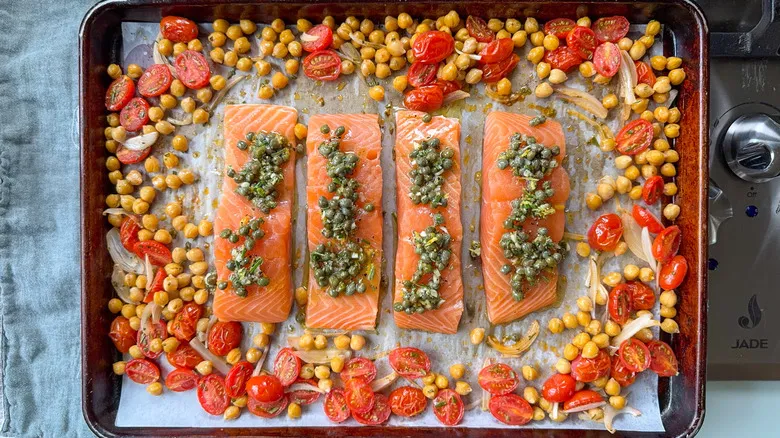
Garnish the salmon with the caper blend.
Step 12: Add the mustard greens
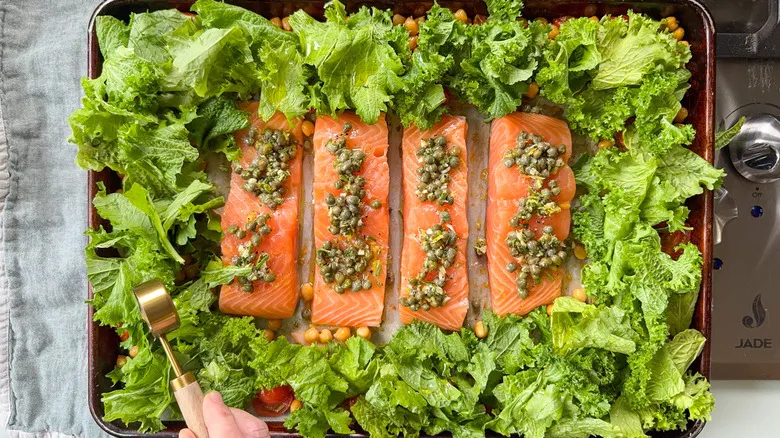
Place the mustard greens around the salmon and drizzle with the leftover tablespoon of olive oil.
Step 13: Bake the salmon
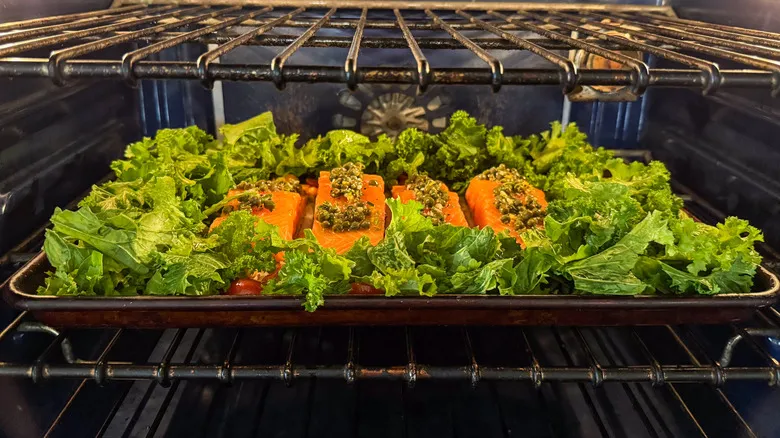
Cook the salmon in the oven for approximately 15 minutes, or until it easily flakes and remains slightly opaque in the middle.
Step 14: Serve the salmon with the mustard greens and chickpeas
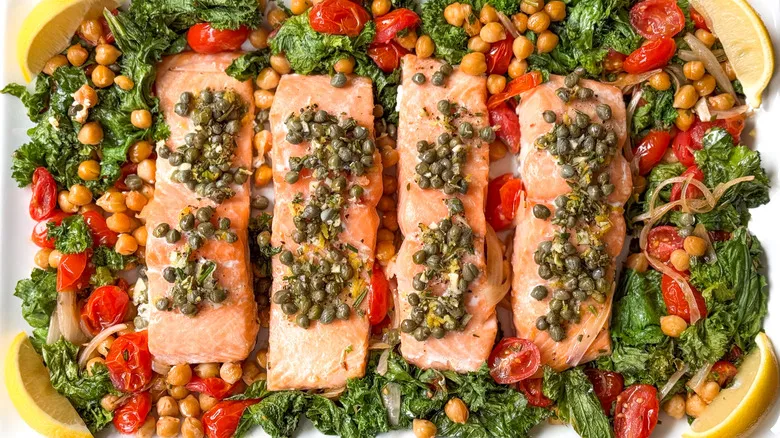
Arrange the salmon, mustard greens, and chickpeas on a serving platter, accompanied by lemon wedges for squeezing.
What are chickpeas and what do they add to this dish?
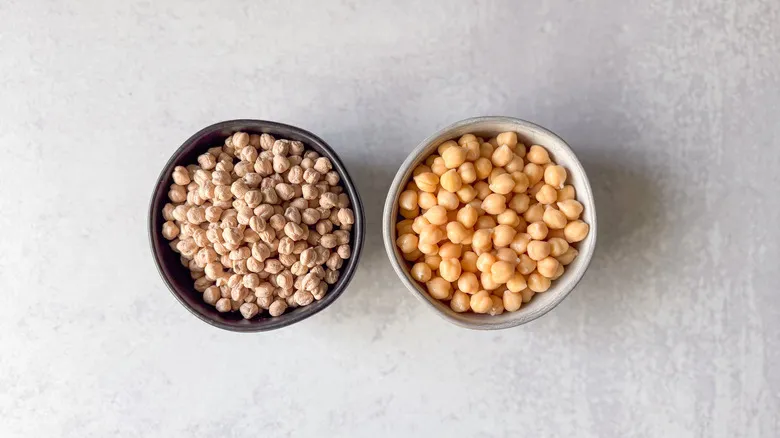
Chickpeas, commonly referred to as garbanzo beans, are an essential component in beloved Mediterranean dishes such as hummus and falafel. They also feature prominently in curries, soups, stews, and a wide range of salads. Additionally, chickpeas are frequently ground into flour for use in high-protein breads and pastas. Packed with a diverse array of nutrients—including iron, calcium, zinc, fiber, and protein—chickpeas add a subtle nutty flavor that enhances nearly any meal.
When incorporating chickpeas into your cooking, you can opt for either dried or canned varieties. Dried chickpeas need to be soaked and require a longer cooking time, making canned chickpeas a convenient choice to keep in your pantry. It's advisable to rinse canned chickpeas to eliminate excess sodium and starch. With their hearty texture, chickpeas can become crunchy when roasted, yet they can also be blended into a smooth puree. The nutty taste of roasted chickpeas in this recipe beautifully complements the rich flavor of salmon and the bitterness of greens.
Why is the salmon baked at a lower temperature in this recipe?
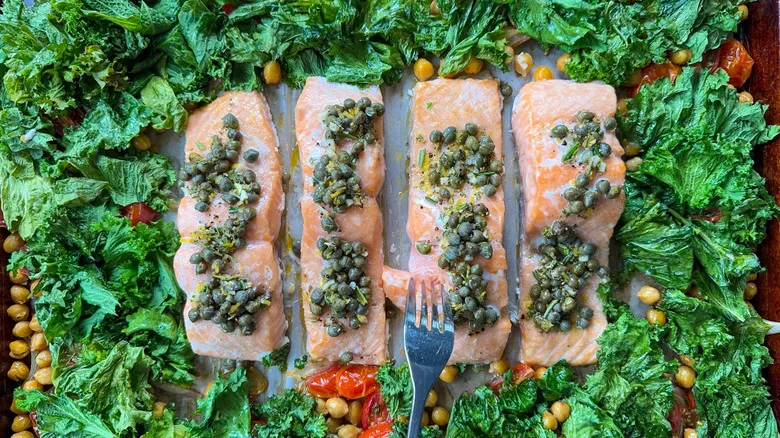
If you're curious about the 100-degree temperature drop during the cooking process, there's a solid explanation for this adjustment. Salmon can quickly transition from rich and moist to dry and chalky when baked at the higher temperatures typically used for meats. Kinnaird explains that roasting salmon at a lower temperature allows the fats to melt gently into the flesh, rather than being lost as the protein strands tighten under high heat. A lower oven temperature gives the proteins more time to denature, or gradually unwind, which helps retain moisture in the fish and keeps the salmon tender instead of dry and overly flaky.
If you've ever cooked salmon and noticed a thick white substance oozing from it, you may have overcooked it. Slow-roasting salmon or using other low-heat methods like poaching can help prevent excessive amounts of this white substance, known as albumin, from leaking out. The result is a perfectly cooked, flaky, and tender salmon fillet that remains moist and doesn't taste overdone.
Recommended
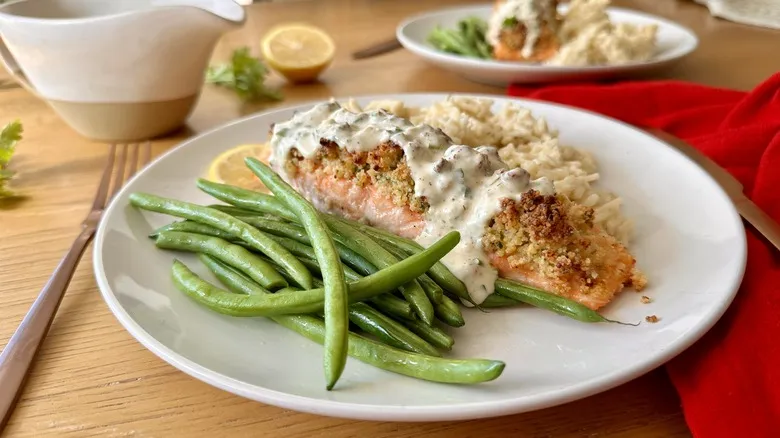
Parmesan-Crusted Salmon With Creamy Herb Sauce Recipe
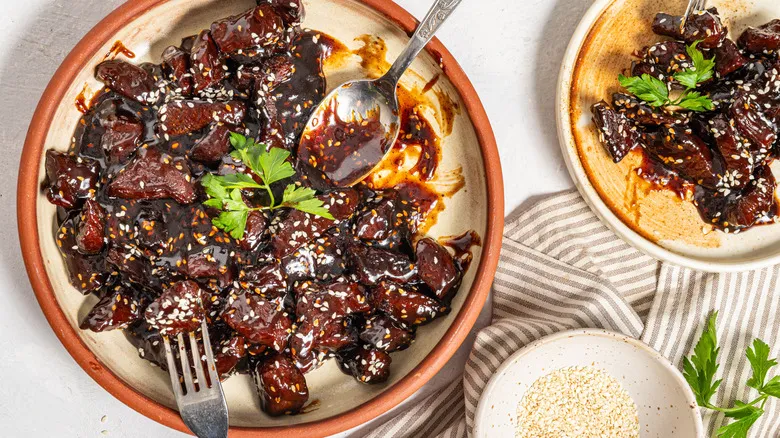
Sticky Soy Steak Bites Recipe
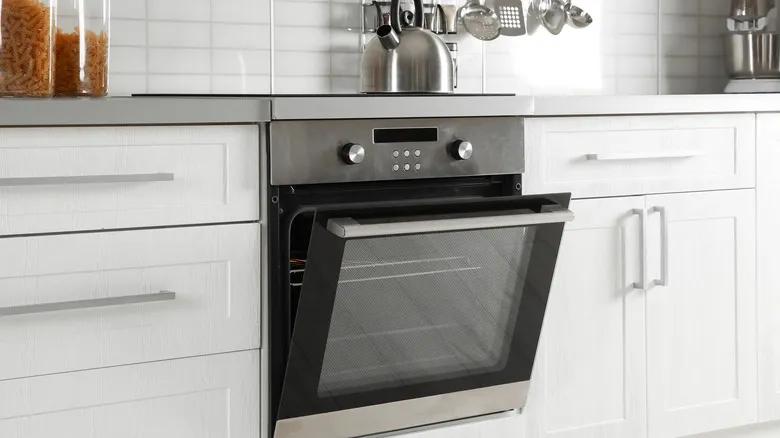
The Simple Way To Adjust Recipes For A Convection Oven
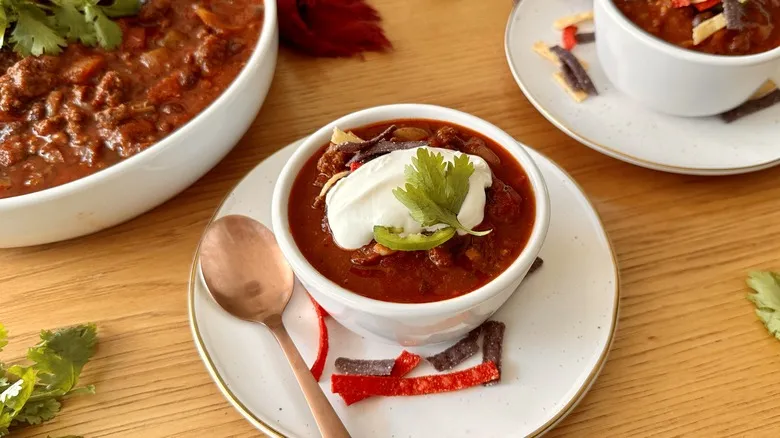
Spicy Slow Cooker Beef Chili Recipe
Next up

